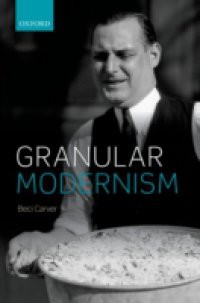Granular Modernism understands the way that some Modernist texts put themselves together as a way of pulling themselves apart. In this volume, Beci Carver offers a new way of reading Modernist novels and poems , by drawing attention to the anomalies that make them difficult to summarise or simplify. Carver proposes that rather than trying to find the shapes of narrative or argument in their writing, the Granular Modernists - namely, Joseph Conrad, WilliamGerhardie, Evelyn Waugh, Henry Green, T.S. Eliot, W.H. Auden, and Samuel Beckett - experiment in certain of their works in finding the shapelessness of a moment in history that increasingly confidently called itself modern, which was to call itself shapeless. The project of Modernism in the late nineteenthand the first half of the twentieth century, was to find a story to tell about an era full of beginnings. The project of Granular Modernism was to find a way of turning the inchoateness of the modern moment into art. Granular Modernism takes from the Naturalist movements of the nineteenth and early twentieth century its attentiveness to the process of mundane experiences like eating or waiting. But where Naturalism sets out to offer a complete picture of a way of life, GranularModernisms eating and waiting fail to amount to anything more; to paraphrase Evelyn Waugh: The most they can hope for is a cumulative futility. Frank Norris once described one of Stephen Cranes narrators as: a locust in a grain elevator attempting to empty the silo by carrying off one grain at a time. Norrisis being dismissive. But his image of pointless, meticulous, indefinite manoeuvre potentially defines the ambition of the Granular Modernists.

